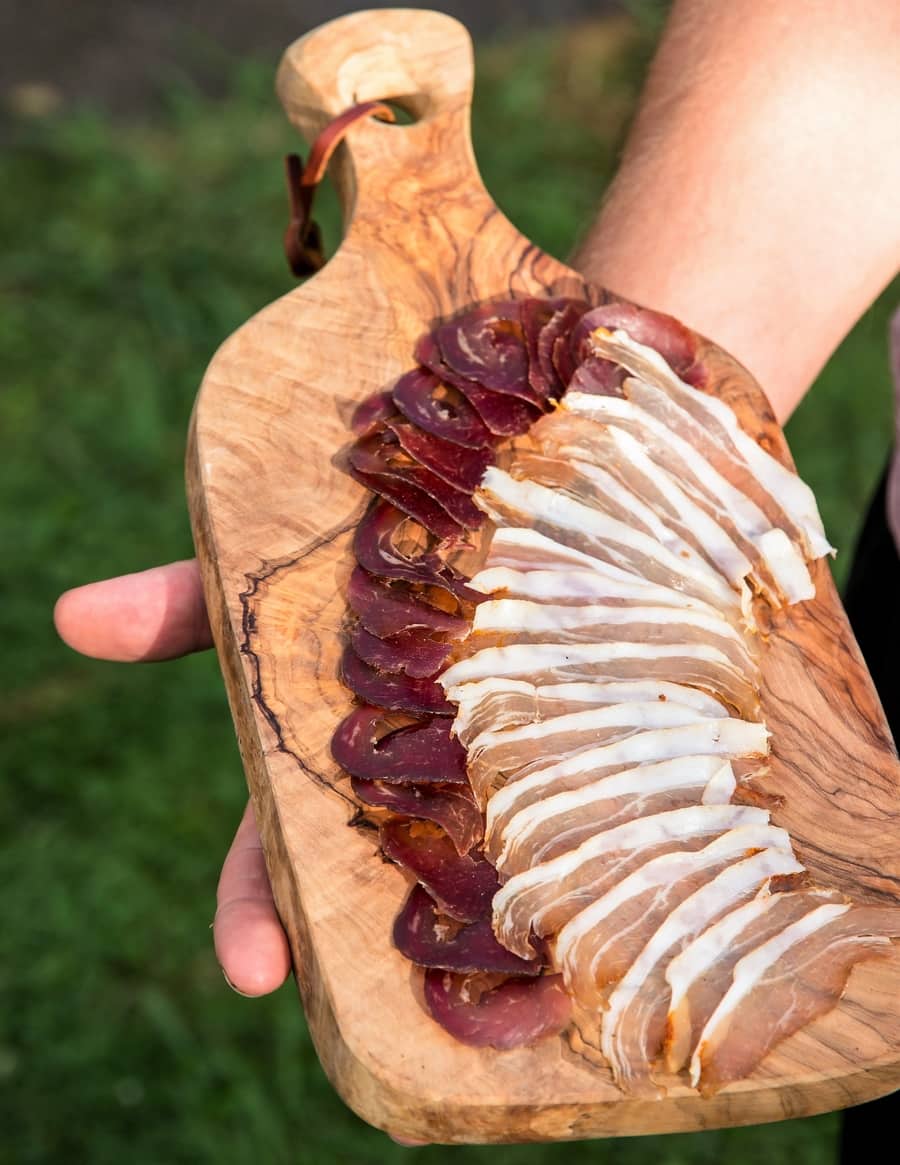Most of the time, humidifiers can be the most important part of the curing chamber.
When you’re looking at this type of component, you are probably also thinking about the size of the chamber. There is always the option of using a duct to transfer the moisture or even a DIY pipe or exhaust attached.
I’ve had 6 DIY dry curing chambers over a few decades, and I wanted to help you just get the right one the first time. Since this is a key component, you can also use these chambers for many other food-related projects as well.
But more often than not, people like to put the humidifier and in the old fridge or curing chamber.

Best Humidifiers for Meat Curing Chambers

- Small Size Humidifier – Pure Guardian Humidifier
- Mid Size Humidifier – Homasy Humidifier
- Large Size Humidifier – SPT Humidifier
So the below is good for most setups, with the variation being mainly the amount of water they can hold in the tank.
The main points I have found are:
- Size
- It needs to be ultrasonic (filtered and fine mist)
- Cleanable (mid-size has a decent hole for cleaning inside)
1. Small Size Humidifier – Pure Guardian
Size: 4.7 x 4.7 x 10.8 inches
Weight: 1.1 pounds / 0.5 kg
Tank Capacity: 0.2 gallons / 2.4 Litres
Warranty: 3 Years
This little number can work out well for pure portability, especially when using a small wine fridge.
At just about 11″ in height, it snuggly fits in the average wine fridge. Since the cycling is minimal, it is often in a wine fridge. Filling up might not be as frequent – it always depends on your
2. Mid Size Humidifier – Homasy Humidifier

Size: 8.8 x 7.5 x 10.2 inches
Weight: 2.5 pounds / 1.1kg
Tank Capacity: 0.6 gallons / 2.2 Litres
Warranty: 1 Year
It is a good size for most curing chambers in the community and has been used a lot. It’s got a giant cleaning hole, which is also a plus.
For most curing chambers, this should do the job very nicely. Plug straight into the humidity controller (article I wrote here reviewing a controller).
I had one of the older models, but it’s the same appliance with a more extensive cleaning hole, and they changed the buttons.
Here is the link to have a look at it.
3. Large Tank Size –SPT Humidifier
Size: 8.4 x 12.6 x 13.75 inches
Weight: 5 pounds / 2.3kg
Tank Capacity: 2.3 gallons / 8.7 Litres
Warranty: 1 Year
This is a good choice for a big 2.3-gallon tank for a full-size kitchen fridge or even a double door.
It is a decent-sized hole for refilling, which means it is easier to clean when there is any build-up inside the tank.
Check it out here on Amazon.
Circulating Mist/Air Flow
Depending on the humidifier, getting the correct position might take some trial and error. Sometimes, a fan or the cold compressor will circulate air a particular wait.
Sometimes, I have the humidifier pointing toward the wall so it isn’t misting directly onto the cured meat.

Tom Mueller
For decades, immersed in studying, working, learning, and teaching the craft of meat curing, sharing the passion and showcasing the world of charcuterie and smoked meat. Read More

Your links to purchase humidifiers are not functioning properly.
thanks for that, it was for the mid size, they moved it…I’ve updated it thanks Tom
Hi, what do i need to convert a 20″ x30″ high kenmore 2 level temp controlled wine cooler into a curing chamber for dry aging pls. It’s in side the dining room and the rom temp is between 70 and 74 degrees. LIttle if any humidity in the house. We never open the windows.
Thanks for your help
Sly here!
Hey Sly, I got all your emails and have responded, cheers Tom
what is the best humidifier for a mini fridge converting into a meat curing cabinet?
A small one, ultrasonic – remember to clean once every month or 2. Cheers Tom – check out the dependable gear pages
Hello. Thank you for offering help. It is much appreciated. I’m an extreme novice in curing meat but after a trip to Italy (Rome) and having experienced the best carbonara in the world, I bought 50# of pork cheek and now I just have to learn how to cure it without using nitrates/nitrites. What pieces of equipment can you recommend to me that are the easiest, most convenient manner to make guanciale? Thank you again so much.
Hey Donna, probably best to learn to cure before starting you can always freeze it and dry cure it later. easy/convenient isn’t’ really how I would describe any quality whole muscle cured meat :-). It’s involved, using your senses, science and a bit of crafting! The ultimate food in my eyes.
The thing is with high fat content cuts (like jowl for guanciale or pork belly for pancetta) it takes time, months. If you have a conducive environment you can hang it in a cellar etc…
I have an online about where, how, and what! Take care Tom – https://eatcuredmeat.com/whole-muscle-meat-curing-course/